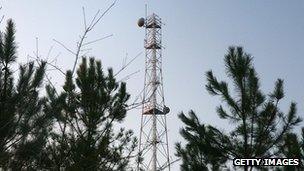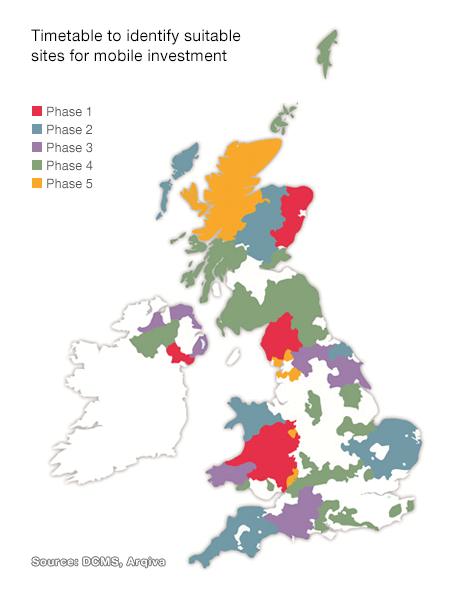Plan to tackle UK rural mobile black spots revealed
- Published

The government says Cornwall, Powys, Strabane and Aberdeenshire will be among the areas to benefit
The government has published details of its plan to provide mobile coverage to 60,000 homes and businesses currently in black spots before the end of 2015.
It has named which parts of the country will share cash set aside for the project, and the order in which they will receive this investment.
It says efforts to identify sites for new masts are already under way in much of Wales, Lancashire and Aberdeenshire.
The Scottish Highlands are among areas where the work will be completed last.
A total of £150m has been set aside for the Mobile Infrastructure Project (MIP), which was first announced in October 2011.
The money will be used to buy the right to erect masts on various properties and to pay for the infrastructure itself. The equipment will then be used by country's network operators, Vodafone, EE, O2 and Three.
The government says it hopes the first of the new sites will "go live" by the end of this year.
Phased approach
A map showing which areas are being given priority by communications infrastructure company Arqiva - which is running the project - has been published by the Department for Culture Media and Sport (DCMS).

The scheme has been divided into five phases, the first two of which are already under way.
Areas including the Highlands, Dumfries and Galloway, Argyll and Bute, Hampshire, Gloucestershire, Fermanagh and parts of Tyrone are set to be among the last areas dealt with.
But since Arqiva will need planning permission before it can carry out the work, it is possible some places will end up leapfrogging others.
"The project will provide a significant boost to local economies across the UK," said Communications Minister Ed Vaizey.
However, the Countryside Alliance - a lobby group running a "not-spots" campaign, external - said it was disappointed the government was no longer talking about providing mobile coverage to 99% of the country's population, external, as suggested by the Treasury in 2011.
"We have previously welcomed the government's investment," said the group's executive chairman Barney White-Spunner.
"We do have concerns, however, that the Mobile Infrastructure Project has been significantly scaled back from its original target, and is now delivering mobile signal to just 60,000 extra premises and 10 sections of A-road where there is no currently signal.
"This falls a long way short of the original target. £150m is certainly a good investment, but we urge government to be more ambitious rather than scale back."
A spokesman from the DCMS responded: "Our refinement work with [communications regulator] Ofcom has indicated that the problem of complete not-spots is not as widespread as first thought.
"There are currently 80,000 premises without coverage, which represents about .3% of total UK premises. The aim of MIP is to cover as many of these as possible, up to the 60,000 announced in the 2012 budget."
- Published5 July 2013
- Published28 June 2013
- Published8 April 2013